Renault Captur
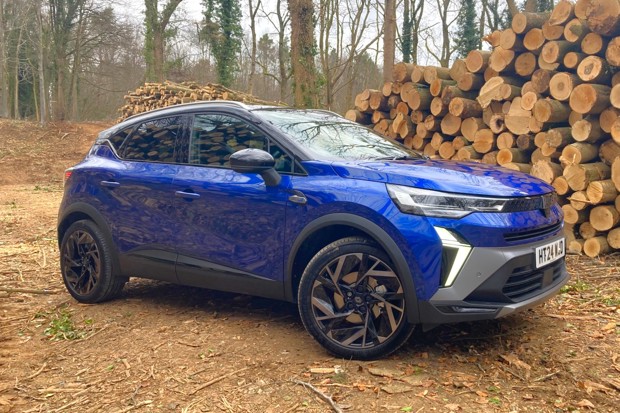
Specifications: Renault Captur Esprit Alpine E-Tech Full Hybrid 145
- Run by: Anthony ffrench-Constant since March 2025
- Price when new: £28,195 (£28,865 including options)
- Engine: 1.6-litre petrol-electric hybrid
- Power: 145PS
- Torque: 250Nm
- Claimed economy: 60.1mpg
- CO2 emissions: 107g/km (105g/km on latest version)
- 0-62mph: 10.6 seconds
- Report 1: We welcome the latest Renault Captur to our long-term fleet
- Report 2: First driving impressions of the new Renault Captur
- Report 3: First spat with the missus…
- Report 4: Service needed, apparently
- Report 5: Sand in the Vaseline
- Report 6: Shake, rattle and roll
- Report 7: The long and grinding road
- Report 8: Goodbye
Report 1: We welcome the latest Renault Captur to our long-term fleet

Date: 21 March 2025 | Current mileage: 1983 | Claimed economy: 60.1mpg | Actual economy: 47.7mpg
The market is now so awash with small SUVs that I’m somewhat surprised haters of ducks can’t buy small, squeaky rubber replicas as a bath-time alternative. If you could, the new Renault Captur would certainly stand out in a fleet already swollen to armada proportions by the popularity of those such as the Ford Puma, Nissan Juke, Peugeot 2008 and Skoda Kamiq to name but a few.
Actually, it would stand out twice — from a styling perspective the revised front and as-you-were back have so little to do with each other you might, on spinning the Captur around, be fooled into thinking two different designs had been launched simultaneously.
Where the Captur’s new face — and alloy wheels — are freshly funked-up with the myriad hard, angular forms shared with the likes of Clio, Rafale and Symbioz, the back end continues the curvature of forms far more redolent of the previous version. The bows and wheels instantly invigorating, then, the tail immediately bland, while the poor flanks desperately try to absorb the differences.
On board, the changes don’t smack you in the face like a robber’s cosh but are significant nonetheless. For starters, there’s no leather or chrome on display to make the interior more eco-acceptable. The rotary climate controls have been ditched but, mercifully, rather than finding their way onto a touchscreen, have been replaced by a friendly row of toggle switches beneath the central 10.4-inch infotainment display.
On all but the entry-level Captur, that screen now plays host to a new, Google-based infotainment system which has Google Maps built in, as well as wireless Apple CarPlay and Android Auto. At first fumble, it seems really easy to use. Better still, two stabs of a dedicated a button adjacent to the steering wheel is all it takes to disengage both the lane-keeping assassin and the speed limit warning bong.
The driving position gives no cause for complaint and no matter how high you raise the seat or lower the helm, you can’t obscure any of the driver’s instrument screen. Pity, then, that its contents of same don’t look a little better…
The rear seats have a party trick, in that they can slide to and fro some 160mm so you can donate space to either the boot or your knees. In truth, if you slide the rear bench all the way forward you’re presumably napping across it and don’t need to implant your legs into the front seat ahead of you — you’ll need it all the way back to have adequate knee-room on a par with roomier rivals.
That sliding rear bench expands the loadspace from 487 to 616 litres, although you will lose 136 litres of that if you opt for the E-Tech Full Hybrid version of the Captur. Folding the rear seatbacks down increases the loadspace to a maximum of 1566 litres.
As to versions, there are just two power choices for the Captur at the moment. The TCe 90 is a 1.0-litre petrol-only with a six-speed manual gearbox, while the E-Tech Full Hybrid 145 uses a 1.6-litre petrol together with the electrical components and a novel automatic transmission.
Neither engine is especially sprightly, the TCe 90 unit dawdling from zero to 62mph in 14.3 seconds, the E-Tech Hybrid a slightly more assertive 10.6. Top speed for both is a whisker over the ton. WLTP Combined cycle fuel consumption and emissions figures are 47.1-47.9mpg and 134-135g/km for the TCe 90 and 60.1-61.4mpg and 104-105g/km for the E-Tech 145.
Then there are three trim levels — Evolution, Techno and Esprit Alpine, the latter yet another example of a manufacturer turning a performance brand badge into a trim level as per previous bows taken by Audi, BMW and Mercedes.
Prices start from £21,695 for an Evolution TCe 90, while the Esprit Alpine trim level is only available with the E-Tech Full Hybrid 145 option, setting you back £28,195 — a hell of a price hike over the entry-level machine. If you do want the hybrid, a more sensible option might be the Techno trim level — which gives you all the bells and whistles you’ll need — for £26,495.
We’ll be living with the E-Tech in Esprit Alpine trim for the next few months, looking into every nook and cranny on your behalf along the way.
Initial impressions? The infotainment system works well, switching off the irritating safety nannies is a doddle, the workings of the hybrid system seem inordinately complex and the ride’s too tough for a small SUV. Watch this space.
Report 2: First driving impressions of the new Renault Captur
Now that we're settling in to life with the Renault Captur its qualities — and foibles — are becoming more acutely obvious.

Date: 14 April 2025 | Current mileage: 3077 miles | Claimed economy: 60.1mpg | Actual economy: 51.2mpg
Stroll up to this top-of-the-range Renault Captur and the door mirrors will hinge outwards to greet you and the doors unlock. As long, that is, as you have the key on you. In ffrench-Constant Towers we all keep our keys on imitation climbing carabiners, so that when we misplace our own we can quickly unclip and steal each other’s car or house keys, and then misplace them too. Except for the Renault key, which we can never find in the first place.
I think it was Lexus which, years ago, first conjured a flat key about the size of a credit card that was supposed to live in your wallet. Inevitably, it didn’t because it was so fat it simply ousted all the other cards, leaving you jaunting happily across country with no means of paying for fuel.
Renault’s key is of a similar persuasion, but shaped more like a diminutive black punt, minus the picnic, popsy and setting pole. Short of a dab of superglue, there’s absolutely no way to connect it to a carabiner, so it lives in my trouser pocket. Just not the trousers I happen to be wearing as I approach the car…
When the resultant trudging and cursing finally abates, the Captur’s interior proves to be rather a pleasing environment in which to settle. The 75% recycled fabric-upholstered sports front seats are comfortable, with sizeable side bolsters that snug you in like a hug from an amorous skate. Electric seat adjustment, plus rake and reach steering wheel repositioning — though only modest in scope — afford everyone a respectable driving position.
Pressing the start button elicits nothing more than a Ready symbol and — JOY! — there’s a small row of tabs to the right of the wheel, including one which, when double-tapped, disengages your previously programmed choice of irritating safety features such as the lane-keeping assassin and the speed limit warning bong.
The E-Tech hybrid system always seems to have conserved enough battery juice to get you moving without the engine firing up. But when it does, the relationship between the noises off from the engine room and the energy flow screen you can dial up on the driver’s instrument panel is, frankly, baffling. That’s because Renault’s hybrid arrangement is complex.
Unlike Toyota’s system which uses a clever planetary gear set-up to seamlessly shuffle power delivery between engine and electric motor — and despite having been around for an age, is still prone to ‘mooing’ like they’re filming an episode of Bonanza under the bonnet as the engine revs to peak power and then stays there while the car catches up — the Renault system has six gears. A two-speed auto box on the electric motor and a four-speed automatic on the petrol engine.
In truth, it’s every bit as smooth as a Toyota hybrid but the engine does still yell a tad every now and then, often holding a higher gear than you feel you need. When the EV light flicks on and off there’s no discernible relationship to the distribution of energy between the hybrid components showing on the display screen.
Sometimes even the most feather-footed approach to the throttle won’t keep the engine quiet — presumably when it feels the need to top up the battery. If only it could do so with a little less vim.
That aside, the hybrid system does its job pretty well. Despite modest performance figures on paper, there always seems to be enough poke on tap when the electric motor jumps in with extra torque for stepping smartly off the line or overtaking. Average fuel consumption seems to be improving with every passing day, having recently climbed into the low-50mpgs. Perhaps because the missus stole the car for a few days…
One thing that neither of us have yet fully acclimatised to yet is the toughness of the ride. I think that’s because every rough patch is exacerbated by the amount of accompanying noise that gets into the cabin. Tipping the scales at 1900kg, this car is already quite a porker, so I guess there may have been sacrifices made in sound insulation to try and keep the weight from climbing further — the price is quite the symphony of road noise.
The Captur demonstrates no little poise through the twisty stuff, no doubt they couldn’t bear to glue an Alpine badge onto something that wallowed like a hot hippo in mud. The hybrid system’s modest power output and the lack of driver control over the gearbox(es) very much hallmark this as a compact family SUV. It’s a shame the suspension doesn’t follow suit.
Report 3: First spat with the missus…
Mrs ffrench-Constant has been spending some time behind the wheel of the Renault Captur recently with rather noisy results.
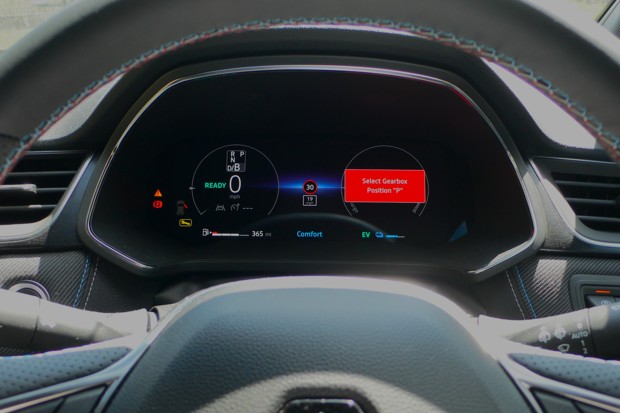
Date: 8 May 2025 | Current mileage: 3991 miles | Claimed economy: 60.1mpg | Actual economy: 54.6mpg
The great thing about handing over a car to someone else in the family is that problems tend to surface under circumstances which you’d have sworn blind were next to impossible. This is especially pertinent in the case of the missus who, out of thin air, can conjure issues which occasionally beggar belief.
The other day she went to collect 20-year old Hooligan B from the gym — quite why a 20-year old needs to go to the gym is the subject of another column entirely. He grabbed the exterior handle, only to find the passenger door locked. For reasons beyond me, the missus failed to see the large button for unlocking said door, despite being helpfully illustrated with a padlock and accompanied by a red light, close to the steering wheel on the centre console.
Instead she cracked the driver’s door a centimetre — we’ve all done it after a failed switch hunt — and Hooligan B climbed aboard. Immediately forgetting her door wasn’t closed properly, she stuck the gear lever in D, whereupon it promptly went berserk. To the sound of a U-Boat crash-dive klaxon the instrument panel lit up with a bright red flag demanding that she ‘Select Gearbox Position P’. This she did… Then, muttering, re-selected D and the whole son et lumiere farrago began again.
Quite why the car neglected to then tell her to close the driver’s door is beyond me. In truth, if you look very carefully at the bottom left of the panel, there is a diminutive image of a dark grey car with a door open. Then again it could just as easily be a dead Dalek. Especially from the perspective of an increasingly irate missus…
Driver idiocy aside, the problem with the electronics in today’s cars isn’t the electronics per se, it’s the people left alone in darkened rooms for too long who programme them.
The other thing that has bemused the missus — well, both of us, in truth — is the somewhat haphazard relationship between the noises coming from the engine and the speed of the car. She finds the drive system’s propensity to bellow randomly even when she isn’t crushing the Axminster with the accelerator pedal intrusive and annoying. Given that it has six gears on offer, I find it both of the above, plus baffling.
Mysteriously, our average fuel economy is still creeping up week by week, despite the fact that random automatic gear selection and random engine racing make it hard to drive for economy.
In other news, the Renault has been reminding me with a daily countdown that it’s due a service in a fortnight. As Private Eye would have it: Shurely Shome Mishtake? I’ve never before encountered a new car that requires its first service with less than 4000 miles on the clock. I’ll ask Renault what’s going on and report back.
Report 4: Service needed, apparently
Who knew booking a car service could be so tricky or how easy it was to inadvertently set the speed limiter with a water bottle?
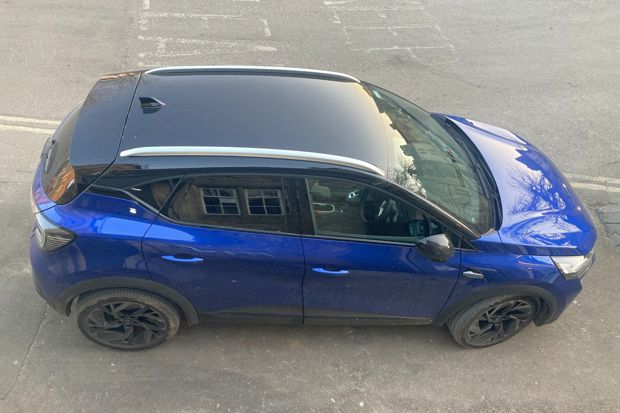
Date: 5 June 2025 | Current mileage: 4449 miles | Claimed economy: 60.1mpg | Actual economy: 54.6mpg
So, as mentioned in our last report, the Renault Captur has been insisting it needs a service. Given that the odometer has only just ambled past the 4000 mile mark, this seemed odd enough to merit a call to Renault. Its representative pointed out that this warning has probably surfaced in relation to the date the car was first registered rather than mileage, which makes sense I guess.
Nonetheless, I thought I’d hold off booking the car in until I’d been off for a gently boating- and booze-fuelled long weekend with some chums on the south coast. Twenty miles from home on the return trip, I was just beginning to feel a tad smug about having got away with it when I pulled away from a filling station only to find the car wouldn’t let me go faster than 20mph.
‘Oh, no!’ I thought, ‘It’s gone into “limp home” mode because I haven’t had the service done and it’s now going to take me the rest of the week to get home.’
However, suspicious of one or two of the icons that had simultaneously cropped-up on the instrument binnacle adjacent to where the dead Dalek had so recently plagued the missus, I stabbed steering wheel buttons furiously for a while until [sigh] the 20mph speed limiter I had inadvertently both set and activated with the blunt end of a diminutive bottle of water switched itself off again.
Suddenly I’m not so fond of helm-mounted switchgear after all. Especially since Renault’s radio volume control remains steadfastly sulking on a separate stalk hidden behind the right-hand side of the rim anyway.
Googling ‘Renault service near me’ produced results best described as something of a mixed bag. But having decided that neither a mobile mechanic nor the Alpine Formula 1 Team (honest!) were quite what I was after, a company called Hartwell — based in one of those automotive industrial estates by ‘London Oxford’ airport in Kidlington — clamoured loudest for attention.
I duly filled out the on-line booking form, including reserving a courtesy car for the day. Then paused, because the company has at least three different addresses at Kidlington Motor City, most of which seem to be related to Ford, plus one I didn’t appear to be dealing with was offering a service for only £129. So, I rang them.
Good job too since, because the Captur’s a hybrid — and despite the giant EV letters on their sign pictured by Google — they can’t service it for me after all. The nice lady I spoke to neatly headed off a million mildly miffed questions about how I’d got so far down the line before discovering I was wasting my time by giving me the phone number of a place in Banbury.
Bit of a wait till 19 June but an even longer one had I insisted on a courtesy car, and I’ll have to get both myself and the missus up at Oh, Christ! Hundred Hours to get the Captur to them by 8:00am. Still, that gives me plenty of time to curse Google and vow never to have a bottle of emergency water in the car again. After all, we managed fine before such a thing existed, didn’t we?
Report 5: Sand in the Vaseline
Why are so many car interiors an utter pain to clean? That was a question we pondered while someone else de-grotted our Renault Captur's cabin.
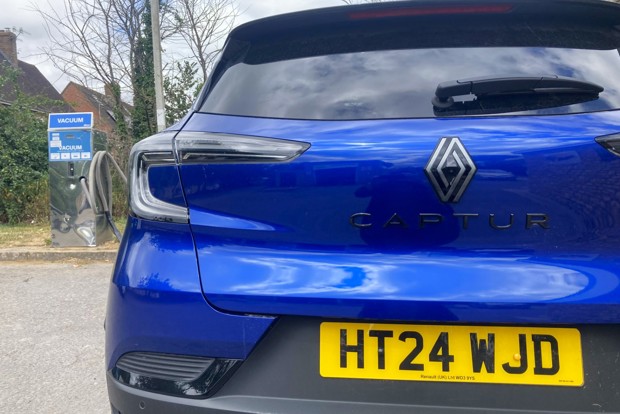
Date: 7 July 2025 | Current mileage: 5162 miles | Claimed economy: 60.1mpg | Actual economy: 54.1mpg
The best thing about having the Renault Captur serviced, especially when there’s less than 4500 miles on the clock and you’re not expecting to pay for anything untoward, is that they offer to clean it for you, inside and out, for free.
When you live in Mudfordshire, this is a joy. As is the fact that, living about as far from the sea as it’s possible to get in mainland Britain, it’s highly unlikely that sand will enter the equation because while mud may be a pain to brush out of carpeted footwells, it’s simply impossible to remove a vestigial beach from the interior of a car.
News that visitors to the British seaside inadvertently take a stupendous 160,000 tonnes of sand home with them in the car each year — the equivalent of 50 million buckets — comes as no surprise to me.
According to the statistics 54% of the sand in question is transported from coast-to-car via shoes, 33% is carried in towels and blankets, 5% loiters in your bucket and spade, 1% is caught in newspapers and books and 6% makes it on-board via our hair and bodies.
Spookily women export more sand than men — an average of 7kg per annum compared with 5kg for men. And I’ve been trying really very hard not to think about what may account for this discrepancy.
As anyone who has ever tried to remove it from a car interior will know, sand has a mind of its own. It either stubbornly refuses to relinquish its grip on carpet fibres, as if equipped with tiny grappling irons, or simply leaps about like nits at a thrash metal concert without ever actually making its way up what a Hoover salesman once described to me as the ‘crevice tool’.
And it’s not just sand that blights a family-occupied car interior — under a warm thigh, the tiniest shard of dropped chocolate will instantly metamorphose into a superglue-intransigent puddle of Lake Michigan proportions; fluffed lollies protrude from every nook like hastily flung school sports day javelins; every crease in the upholstery fills to capacity with dog hair and mysterious fluff, possibly of navel origin; and — the recipients of relentless size 3 kickings — the front seatbacks sport more earth than a half-time rugby union hooker.
In the same way that — in nigh-on a century of relentless automotive ingenuity — no one seems to have been able to improve on the basic rasp ‘n’ smear design of the humble windscreen wiper, nobody has yet come up with a range of interior finishes that can both look and feel good while being readily cleanable without recourse to the costly shoal of ‘valeters’ sloshing about outside your local supermarket, or something hideous called Back to Black, which is surely the world’s second most unpleasant invention after reality television.
Yet car designers — too busy dubbing dashboard finishes as having ‘technical’ or ‘animal’ grain to realise that, once scuffed, both should be simply labelled ‘uncleanable’ — actually seem proud of their increasingly impractical offerings.
I well recall discussing the elegantly upholstered loadspace of the Volvo XC90 with its designer when that car first broke cover, focusing upon the complexities associated with inserting a wardrobe or somesuch. ‘Oh, you wouldn’t want to do that,’ he snorted, ‘it would muck up the carpet…’
Truth is, however, for all the grot, my Captur’s interior remains veritably pristine compared with the current state of its couture. With Mudfordshire more than living up to its name at the moment, I’ve got more chance of successfully making love standing up in a hammock than I have keeping it the colour the Renault intended.
All of which is why, if it didn’t refuse to top 60mph, favour gallons to the mile and need switching off at petrol stations to avoid gaining on the pumps, I’d spend a deal more time in my old V8-engined Land Rover …
A badly aimed hose on a six-monthly basis will suffice externally. Internal maintenance is ludicrously simple because, beyond swiping muddy dog paw prints from the sumptuous leatherette upholstery with the seat of my trousers, I simply don’t bother. A car that looks great if you never clean it… Who could ask for more?
Report 6: Shake, rattle and roll
We may have found a solution for our Renault Captur's recently developed interior rattles — teenagers and topsoil. Shame they dent its fuel efficiency though.
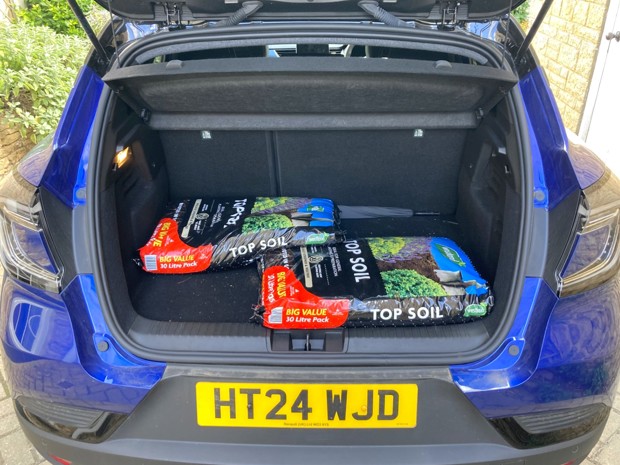
Date: 24 July 2025 | Current mileage: 5531 miles | Claimed economy: 60.1mpg | Actual economy: 53.2mpg
It’s been driving me quietly potty trying to figure out why our Renault Captur has lately been consistently turning in fuel efficiency figures of almost 1mpg less than its norm. That was until I remembered there are still two 30-litre bags of topsoil lurking in the boot. I’d forgotten all about them, but the E-Tech Hybrid drive system clearly hasn’t.
Even the faintest of dabbles with maths requires pre-bolstering with a stiff drink here in ff-C Towers, so I turned to Google for some assistance in finding out how much several dozen spadesful of Mudfordshire might actually weigh. And here I must preface what I have discovered with the news that this all comes from AI, which now seems to take pride of place in response to every internet query.
Apparently 60 litres of the stuff I bought — and AI was kindly very specific about the company which bagged it up — weighs 30kg. This on the Samsonite scale means absolutely nothing to me, but happily AI once again lumbered to the rescue with the news that this equates to the weight of the average 10-year-old boy in, erm, Queensland. As in Queensland, Australia.
On the plus side, all that extra weight in the loadspace does seem to have settled the Renault’s ride down a whisker. A blessing because, as the missus has pointed out more than once, the poor thing seems to be shaking itself to pieces.
I’ve no complaints whatsoever about build quality to date, but when a car rides this firmly and every apologetic little blemish in the road surface transmits to the cabin like a sleeping policeman with vertical sides, it’s hardly surprising that even the most robustly assembled components will start losing their grip.
It's almost impossible to identify the location point of some of the noises. Rattles seem to predominate in vacant seats and I’m not sure what can be done about that save either getting the teenagers back on board or filling shopfront mannequins with topsoil and strapping them in place instead. More recently the Captur has developed the propensity to creak like a galleon in a gale and we simply can’t do anything about that except plan our routes hither and thither to take in only the finest road surfaces available. That shouldn’t take long...
All of which suggests that if you have a have a couple of teenage children and want to help save the planet to the tune of a couple of mpg, best accept the car rattling like Mothercare on a Saturday morning and leave them behind next time you have a drive of any distance planned — such as going on holiday.
Report 7: The long and grinding road
Few things challenge cars — and their drivers — like a miserablely congested road. Our man's not a fan, but the Renault Captur's E-Hybrid system sparkles on the A34.
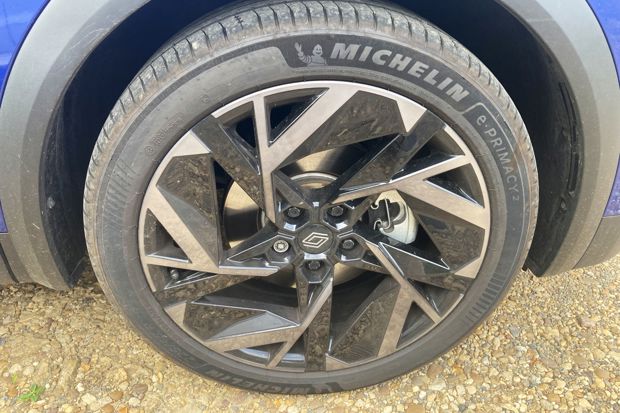
Date: 11 August 2025 | Current mileage: 5864 miles | Claimed economy: 60.1mpg | Actual economy: 59.2mpg
There’s nothing like a few hours spent loitering along the most infuriatingly badly driven stretch of dual carriageway in England to really test the mettle of any car, not to mention its driver. Welcome, then, to the A34.
In these circumstances the Renault Captur’s handling abilities — occasional fits of emergency steering to dodge some lunging idiot aside — are hardy going to be put to the test, but you can bet your last red cent that both its ability to go and slow will be subject to a pretty severe and entirely unsolicited examination.
Renault’s hilariously complex hybrid powertrain continues to baffle. By way of a quick reminder: Unlike Toyota’s system, which uses a clever type of gearbox to seamlessly shuffle power delivery between engine and electric motor, the Renault system has six ratios in total. This arrangement comprises a pair of automatic transmissions — a two-speed variety for the electric motor and a four-speeder connected to the petrol engine.
While a gentle right foot can largely prevent the Toyota from sounding like they’re branding heifers under the bonnet as the engine revs to peak power and then stays there while the car’s road speed catches up, the relationship between the noises from the Renault’s engine room and the alacrity at which it’s travelling is far harder to understand.
Exacerbating the sensual confusion is the Captur’s determination to ensure there’s always at least a 50% battery charge available, so even the most feather-footed approach to the throttle won’t keep the engine quiet as it will feel the need to top up the battery.
All of which makes urban driving something of a pain and nothing like as economical on fuel as you’d hope. What’s extraordinary is that on a crowded A34 the whole E-Tech Hybrid system comes into its own. Shifts are, as always, smooth as a freshly buttered bannister, but free of steep gradients and the need for rapid acceleration, the whole thing settles down. Not only does it stop yelling at you but also — over the course of some five hours’ driving — returns nearly 60mpg. That’s pretty much the official economy figure — a rare feat in any car and hugely commendable.
The brakes also get a workout on the A34. Inevitably sandwiched between two juggernauts, you’re surrounded by traffic which relentlessly over-brakes for any reason. My personal favourite sight to witness involves following another car over the brow of a hill only for them to see a stream of dense — but moving — traffic significantly ahead, yet they immediately start panic-braking. A dozen cars back you’re coming to a full stop, like it or not.
At which point you’re reminded that the Captur’s brakes are a bit odd. By which I mean the interaction between the discs and the E-Tech’s regeneration system seems to be a tad flaky. Don’t get me wrong, there’s nothing wrong with the stopping power on offer, but it feels as if there are little hesitations in retardation even under a constant weight of brake pedal. Nothing hairy but it’s there.
Much like the firmness of the ride. You sort of settle into it over a long distance, and speed definitely irons out the worst that most surfaces have to offer.
It’s hard, though, to report on road noise at such speeds, because the missus insists on making me turn off the cricket commentary and listen to some dire, rap-tastic popular beat combo rubbish instead. One of the main reasons I suspect we’ll always be a two-car family.
Report 8: Goodbye
It's time to bid our Renault Captur a largely fond farewell. Some generally minor gripes aside, its proved to be a capable small SUV — with some fine-tuning it could be a really compelling one.
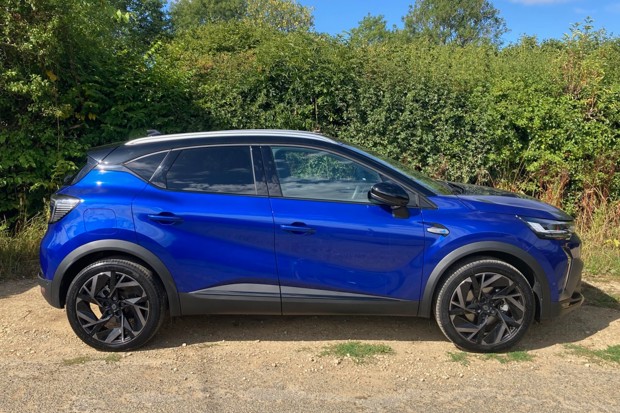
Date: 4 September 2025 | Current mileage: 6456 miles | Claimed economy: 60.1mpg | Actual economy: 51.8mpg
After six months of throwing everything at it that the average 2.4-child family plus its evil-smelling dog could conjure, we say a surprisingly fond farewell to our Renault Captur.
Despite having decided that after only 4000 miles it desperately needed a service, the Captur has proved reliable, dependable, and — said Labrador’s reluctance to occupy what it deems a slightly too-cramped loadspace aside — practical.
It’s proved somewhat interesting to live with, in that almost everything positive about the Captur also has a downside. Take the key, for instance… It’s great having a key that never has to come out of your pocket. Walk up to the car and as you reach for the door handle it unlocks. Jump in, press the start button and you’re off. You simply reverse the process when leaving the car — the mirrors folding away to confirm locking, so you don’t keep going back to check which, of course, would merely unlock the thing again.
Thing is, there’s no way to fix the key to a keyring, plus its little black soap dish design naturally lends itself to snug trouser stowage rather than more jacket pocket clutter. But I keep leaving the blasted thing in the wrong trousers (Gromit), which invariably leads to cursing, house unlocking, stairs and laundry bin rummaging. It hasn’t actually been in the washing machine but that’s more by luck than good judgement.
Then there’s the wireless phone charging. Early in our relationship the Captur continually disconnected my mobile from its memory bank. I put this down to sheer mischief and it has since stopped. But every time I try to charge my phone by dropping it on the requisite tray beneath the centre console, it gets hot very quickly, charging very s…l…o…w…l…y indeed. Over the entire course of a recent four-hour journey it managed to creak from 10% to just 30% charge. Poor. Although, it could be something specific to my model of phone.
One thing with no downside at all is the facility to switch off both the lane-keeping nanny and the speed limit warning noises with a simple double tap of a switch at the start of every journey, courtesy of something called Perso. No, not a new washing powder but a personalisation option for grouping, then shackling, unwanted safety features. Shame said features won’t then stay off in perpetuity, but pan-EU safety legislation dictates otherwise.
No complaints about the Renault Captur’s driving position either. The driver’s seat has electric adjustment and it’s easy to get comfortable behind the wheel. Visibility is first-rate in all directions, abetted astern by a camera. The seat doesn’t hug you like an over-amorous halibut and quite right too — this isn’t a sports car, although it does begs the question: Why is the ride so firm?
I know this version has ‘Alpine’ buried somewhere in its absurdly long model name but that’s just marketing for those easily suckered-in — see also what Mercedes has done with AMG and BMW with M.
This is a small family SUV with a small hybrid drive system. It doesn’t need to hurtle round corners with sufficient vim to paste toddler puke on the side windows. It needs, above all else, to cruise comfortably on motorways and merely not roll like a dog begging for a biscuit at first sight of a bend. As previously discussed, its ride does settle the faster you go but at lower speeds it’s far too harsh. You could run over a coin and tell whether it’s showing heads or tails…
The machinations of a gearbox which divides its cogs up between the engine and the electric motor continue to baffle. One minute good as gold and slipping the car along in near silence, the next bellowing like a freshly-branded heifer for no perceptible performance gain, but to the clear detriment of the fuel economy.
Over the course of two long journeys recently, the Captur recorded economy figures of almost 60mpg on one trip, then nearer 50mpg on the next. Similar mix of traffic congestion and clear roads, with similar speed ranges. As I said, baffling. I know the system isn’t happy unless there’s at least a 50% charge to the battery but I remain utterly in the dark as to how this could so dramatically affect the fuel efficiency.
The brakes, too, continue to have a life of their own, with the shift between regenerative and proper physical braking often neither smooth nor predictable. This doesn’t diminish their admirable stopping power but sometimes just feels tad weird.
Oh dear, this is all starting to sound like something of a litany of gripes. It isn’t meant to be — the Renault Captur is a perfectly able companion and a doddle to live with. Especially if you only own one pair of trousers. Rather this should be taken as a list of largely minor details, the fine-tuning of which would add considerable appeal to what is already a perfectly sound small SUV.
